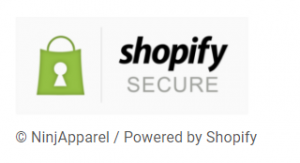It would be fair to say that cryptocurrency has had something of a bad press in the business world since bitcoin mined its first block in January 2009. But the world has moved on.
Today there are publicly listed companies that hold bitcoin on their balance sheet such as MicroStrategy and Tesla, giant fund manners Fidelity and BlackRock entering the space and banks looking to set up custody operations for clients who have been beating down their doors to get in on the crypto action, current market reversals notwithstanding.
Today, the average chief financial officer will still vigorously resist proposals to carry such a speculative asset class as crypto on the books, but the days of dismissing crypto out of hand as “rat poison squared” as Warren Buffett famously did, are less common.
Let’s leave to one side the prospect of Microsoft or Google putting crypto into Treasury, however, and concentrate instead on the real use cases for crypto, which stretch way beyond digital assets as currencies, as many firms in the software-as-a-service space will know.
Blockchain could bring greater dynamism to markets and businesses
To generalise, the blockchain technology that underlies digital assets has the potential to up-end many of the architectural underpinnings of current centralised offerings such as cloud software.
This challenge is neatly compartmentalised under the heading Web 3.0 – where decentralised “trustless” networks wrest delivery of digital services such as file storage and accessing cloud-based software takes place on self-verifying platforms dependent on nodes reaching consensus as opposed to teams directed by the policies ultimately signed off by the chief information officer and maybe the board of directors.
But as any VC or private equity firm will tell you, it is all about how to pick the winners. Equally however, by standing on the sidelines a firm could see competitors steal a march that it might be hard to close the gap on at a later date. Institutional FOMO – fear of missing out – is strong.
And at times like the present, after a strong drawdown in crypto valuations, many such firms will be eyeing where to plant their flags so that in the future the waterfall calculations for their funds show the market-beating returns their client investors expect on exit.
Identifying business sectors ripe for disruption
Below we provide a roundup of 12 crypto assets that have the potential to scale for mass adoption in financial markets but also other areas of the economy, from cloud computing to content delivery networks.
In our survey we will resist the temptation to take an adversarial approach, where crypto’s gain is taken to be the current incumbents’ loss. We don’t believe that is how things will develop. Indeed, many of today’s leading SaaS companies are likely to be leaders in adopting aspects of blockchain technology.
Take, for example, the deepening relationship between Shopify and Coinbase. This week Tobias “Tobi” Lütke, the founder and chief executive officer of Shopify, joined the Coinbase board of directors. The e-commerce company already uses Coinbase Commerce for crypto payments functionality as part of its e-commerce as a service platform.
Its a case of a symbiotic arrangement, where each corporate scratches the other’s back – Shopify gets Coinbase’s expertise in crypto payments and custody, while Coinbase for its part may learn about how to deliver e-commerce solutions as a service for small and medium-sized businesses.
To have the best shout at gaining exposure to the best the crypto sector has to offer, it is probably necessary to diversify across the asset class’s various sub sectors, which is what we have tried to do with our nifty dozen picks.
We have picked 12 cryptocurrency with the technology, adoption progress, execution and product marketing prowess to deliver on the promise of blockchain as a disruptor and disintermediator that could change the face of the SaaS space in innovative and profitable ways.
As with all definitions, competing ones can bleed into each other, but we have grouped our token selections into the following four business sectors, with three crypto in each:
Web 3.0
Metaverse & non-fungible tokens (NFTs)
Decentralised finance (DeFi)
Data management
All table data correct as at 2 February 2022
Here’s our 12 Best Cryptocurrency to Invest in 2022
Web 3.0 cryptocurrency for 2022
1. Lucky Block – transforming lotteries with blockchain tech
Lucky Block is a new lottery platform that aims to revolutionise the $330 billion global industry by solving, among other things, the lack of transparency and trust in current lottery products. Breaking the grip of the centralised lottery operators by applying the power of ‘Web 3.0’ decentralised networks is how Lucky Block plans to succeed.
With Lucky Block, winners are not just randomly generated in a verified manner but players will be able to vote on where charitable donations go – with all transactions visible on the public blockchain.
In addition, the cost savings that accrue from running lottery draws on a blockchain are the basis for better odds for ticket buyers. The benefits don’t end there. Lucky Block, which launches on 21 March when the mobile app is scheduled to be available, also pays a dividend to every token holder.
Then there is the added allure of the 12% transaction fee on sales of the native token of the platform, LBLOCK, which acts to incentivise long-term investment as opposed to purely speculative trading so common in crypto hitherto.
Lucky Block’s mission is to nothin less than the replacement – or supplementing – of national lotteries with a truly global system open to all. There’s all to play for, so to speak.
LuckyBlock (LBlock/WBNB)
Price:
$ 0.001516 (24h -16.35%)
Volume 24 hour:
$ 2,121,294.82
Holders:
17,913
Transactions:
115,881
Pooled LBlock:
1,056,303,838.97
Pooled WBNB:
4,214.40
Liquidity:
$3,203,101.98
Diluted Market CAP:
$151,618,400.86
Launch partners
The Manc Group
Finixio
2. Filecoin (FIL) – distributed file transfer and storage
Filecoin is a distributed data storage network that seeks to turn unused data storage into a business resource, where those with excess capacity are able to sell it users seeking greater capacity. Exchange takes place in an automated algorithmically driven marketplace.
The network is built on top a protocol known as InterPlanetary File System (IPFS), acting as both a layer to incentivise participation in the network and provide security in addition to its peer-to-peer sharing of storage. Protocol Labs is the company behind Filecoin.
RETURN ON INVESTMENT (USD – %)
24H
0.76
7D
9.85
1M
-39.63
3M
-66.12
1Y
-5.87
Institutional investors
Ausum Ventures
Blockchain Capital
BlueYard Capital
Boost VC
Coefficient Ventures
Continue Capital
Digital Currency Group
Galaxy Digital
Kosmos Capital
Nirvana Capital
Notation Capital
Pantera Capital
Placeholder VC
Y Combinator
a16z Crypto
zk Capital
3. Theta Network (THETA) – decentralised video streaming
Huge investment is pouring into the video streaming industry, as heavyweights such as Netflix, Amazon, Apple, Disney and more compete for eyeballs. But Theta Network is using blockchain to transform how we consume video content, as well as up-ending the creative process and the technology of streaming. The THETA token incentivises network usage, where excess computing power and bandwidth can be shared across the decentralised network.
RETURN ON INVESTMENT (USD – %)
24H
-0.27
7D
3.92
1M
-37.89
3M
-62.18
1Y
35.52
Institutional investors
Consensus FinTech Group
DHVC
DU Capital
Fundamental Labs
Genesis Block
Gumi Cryptos
Huobi Capital
Jove Capital
Nirvana Capital
ONEBOAT CAPITAL
Origin Capital
RootsCap
ZMT Capital
Metaverse and NFT cryptocurrency for 2022
4. The Sandbox (SAND) – metaverse and gaming digital asset monetisation platform
The Sandbox platform is an ecosystem where gamers can create, own, and monetise their activities wit the help of non-fungible tokens (NFTs) and its utility token $SAND. NFTs are in effect a digital certificate of ownership. Players can use NFTs to assign verifiable ownership to their digital assets integrate into games and trade on marketplaces. The Sandbox provides tools such as the Game Maker to enable player engagement.
Also, The Sandbox virtual world – or metaverse – is comprised of digital lots of real estate bought with LAND tokens, where players can become digital property developers and interact. Companies such as Facebook owner Meta are betting big on the metaverse as the next iteration of the internet, where people will work, play, socialise and shop, so there will be money to be made. An unknown buyer recently paid $450,000 for a patch of virtual land next to rapper and businessman Snoop Dogg’s Sandbox ‘residence’.
RETURN ON INVESTMENT (USD – %)
24H
-0.51
7D
29.2
1M
-30.14
3M
47.06
1Y
4018.05
Institutional investors
Binance Labs
HASHED
True Global Ventures
5. Decentraland (MANA) – Metaverse virtual world
Decentraland is similar to The Sandbox in its virtual world aspect. Here there are also LAND tokens which are purchased with the ERC-20-compatible MANA token that runs on the Ethereum blockchain. Again NFTs are used to assign ownership to the digital real estate. And just like in the real world, the most valuable LAND is to found in the busiest places.
NFT-focused company Tokens.com spent nearly $2.5 million on LAND in the virtual world in an indication of the burgeoning interest in the metaverse and the commercial opportunities it offers.
And at the end of January the metaverse’s first mortgage was taken out. On 29 January TerraZero, a vertically integrated metaverse company, advanced financing to one of its clients so they could buy Decentraland real estate.
While Mark Zuckerberg’s Meta Platforms is spending billions to build its metaverse, crypto have been quietly building an ‘open’ metaverse for a number of years, and at far less cost.
RETURN ON INVESTMENT (USD – %)
24H
-3.63
7D
24.55
1M
-17.14
3M
7.44
1Y
1502.35
Institutional investors
Animoca Brands
Boost VC
Digital Currency Group
Fabric Ventures
Fundamental Labs
HASHED
Kenetic Capital
Kosmos Capital
6. Enjin (ENJ) – gaming community platform, virtual goods marketplace
Enjin Coin is another game-focused metaverse product from the crypto world, this time focused on making its token the go-to digital asset for in-game items. Enjin aim is to become the “largest gaming community platform online” and already boasts the involvement of 250,000 gaming communities with a total of 18.7 million gamers.
The Enjin team are innovators in the NFT field, with a token they invented winning approval as an Ethereum token standard for specialised NFTs – ERC-1155. Similarly to the The Sandbox, Enjin distributes software development kits (SDKs) to developers in order to facilitate rapid deployment of integrations into games.
RETURN ON INVESTMENT (USD – %)
24H
-1.24
7D
17.93
1M
-34.35
3M
-38.83
1Y
401.08
Institutional investors
CoinFund
Coinbase Ventures
DT Capital Partners
Digital Currency Group
Framework Ventures
Kilowatt Capital
LedgerPrime
Lemniscap
Multicoin Capital
ParaFi Capital
DeFi cryptocurrency for 2022
7. Curve (CRV) – decentralised exchange
Curve protocol has been a fast-grower in the decentralised finance (DeFi) sector. Its approach was initially centred on leveraging the liquidity of stablecoins to create more stable sources for yields on loans. There are no order books for the markets on Curve, with market making instead an automated process built around liquidity pool trading pairs.
Today it has expanded to become a venue trading all manner of coins with pegged values, such as so-called wrapped tokens that run blockchains other than Ethereum where Curve runs.
Currently, Curve has 122 different liquidity pools for the pairs that can be swapped on the decentralised exchange (DEX), where its highly competitive trading fees, deep liquidity and constrained slippage (when the price slips between the time the trade execution began and it finishing).
RETURN ON INVESTMENT (USD – %)
24H
1.42
7D
17.67
1M
-48.16
3M
-18.76
1Y
34.99
Institutional investors
Fuel Venture Capital
Crowdcube
CreditEase Fintech Investment Fund
Outward VC
8. Uniswap (UNI) – decentralised exchange
Uniswap took original form in 2016 in the mind of Ethereum co-founder Vitalik Buterin as a blue-sky idea he was musing about. As with Curve, it operates with an automated market making system that obviates the need for an order book. Prices are determined by the ratio of the paired swapping assets.
Uniswap is the largest DEX by volume and its AMM system solves the problem of low liquidity in assets that hard are deemed hard to trade by traditional market makers. Because on a DEX anyone can be a market maker, thin liquidity is not an issue.
RETURN ON INVESTMENT (USD – %)
24H
-2.26
7D
4.94
1M
-39.8
3M
-56.86
1Y
-41.45
Institutional investors
Andreessen Horowitz
Coinbase Ventures
Defiance Capital
Delphi Digital
ParaFi Capital
Paradigm
Three Arrows Capital
9. PancakeSwap (CAKE) – decentralised exchange
PancakeSwap is a decentralised exchange (DEX) that run on the Binance Smart Chain (BSC) and is also based on automated market making system. PancakeSwap is a fork of SushiSwap, which is another Ethereum-based DEX.
A fork refers to a coin that shares it’s codebase with another crypto, but there are differences that add extra features. In this case, the change is the DEX runs on the Binance Smart Chain which is faster and cheaper to transact over.
BSC is built by the world”s largest crypto exchange Binance and operates with a form of what is known as a proof of stake system, where just 21 validators verify transactions as oppose to thousands of nodes on Ethereum.
RETURN ON INVESTMENT (USD – %)
24H
-0.65
7D
2.18
1M
-37.18
3M
-59.49
1Y
231.96
Institutional investors
LedgerPrime
Binance Labs
Data management cryptocurrency for 2022
10. Chinalink (LINK) – decentralised oracle network
Chainlink’s purpose is to solve the problem of connecting smart contracts to real-world events in a secure fashion. Smart contracts are pieces of code that embody certain business logic, such as when to pay an interest on a loan. In order to known when to make the payment to lenders, the smart contract in this case would need to know the calendar date.
Real-world information such as this is provided by ‘oracles’, which are in effect data feeds of one kind or another that exist off-chain. Chainlink is a network of independent oracle node operators, which makes it more secure than previous oracle services.
Services such as those provided by Chainlink are emerging as the essential plumbing of the blockchain world.
RETURN ON INVESTMENT (USD – %)
24H
-0.42
7D
12.29
1M
-27.84
3M
-44.83
1Y
-27.73
Institutional investors
Anmi OECD
Consensus Capital
Framework Ventures
Outlier Ventures
11. Dent (DENT) – decentralised mobile data marketplace
Dent says its vision is to create a global exchange using the Ethereum blockchain, where everyone has the opportunity to buy and sell mobile bandwidth in any country. With 7.26 billion thought to own a smart or feature phone – 91.62% of the world’s population – the business opportunity in this market is immense.
The company has already attracted more than 25 million mobile device users onto its decentralised marketplace for trading data surpluses. Dent’s service is available in more than 140 countries.
It is making significant strides forward in enterprise. Dent has partnerships in place with Samsung Blockchain and Telecom Infra, for instance.
RETURN ON INVESTMENT (USD – %)
24H
0.56
7D
4.37
1M
-35.46
3M
-62.16
1Y
634.87
Institutional investors
SEED Venture Capital
12. The Graph (GRT) – indexing protocol for querying blockchains
We take for granted that the internet “just works”, without having to think about how universal resource locators (urls – web links) actually work of what TCP/IP protocols are. Without them there would be no Google search engine. The Graph is attempting to build the indexing standard for the decentralised application world, so that data on blockchains can be queried in an easily accessible way.
Developers build applications with The Graph’s open APIs can readily access on-chain data that have been previously indexed by a network of node operators.
The Graph’s technology – called Subgraphs – is open source so all-comers can build decentralised apps (dApps) using them. Among the many Ethereum dApps using Subgraphs are high-profile projects Audius, Uniswap, and Synthetix.
RETURN ON INVESTMENT (USD – %)
24H
3.6
7D
6.9
1M
-34.27
3M
-58.95
1Y
-42.54
Institutional investors
Coinbase Ventures
DT Capital Partners
Digital Currency Group
Framework Ventures
Kilowatt Capital
LedgerPrime
Lemniscap
Multicoin Capital
ParaFi Capital
Tally Capital
(41)




